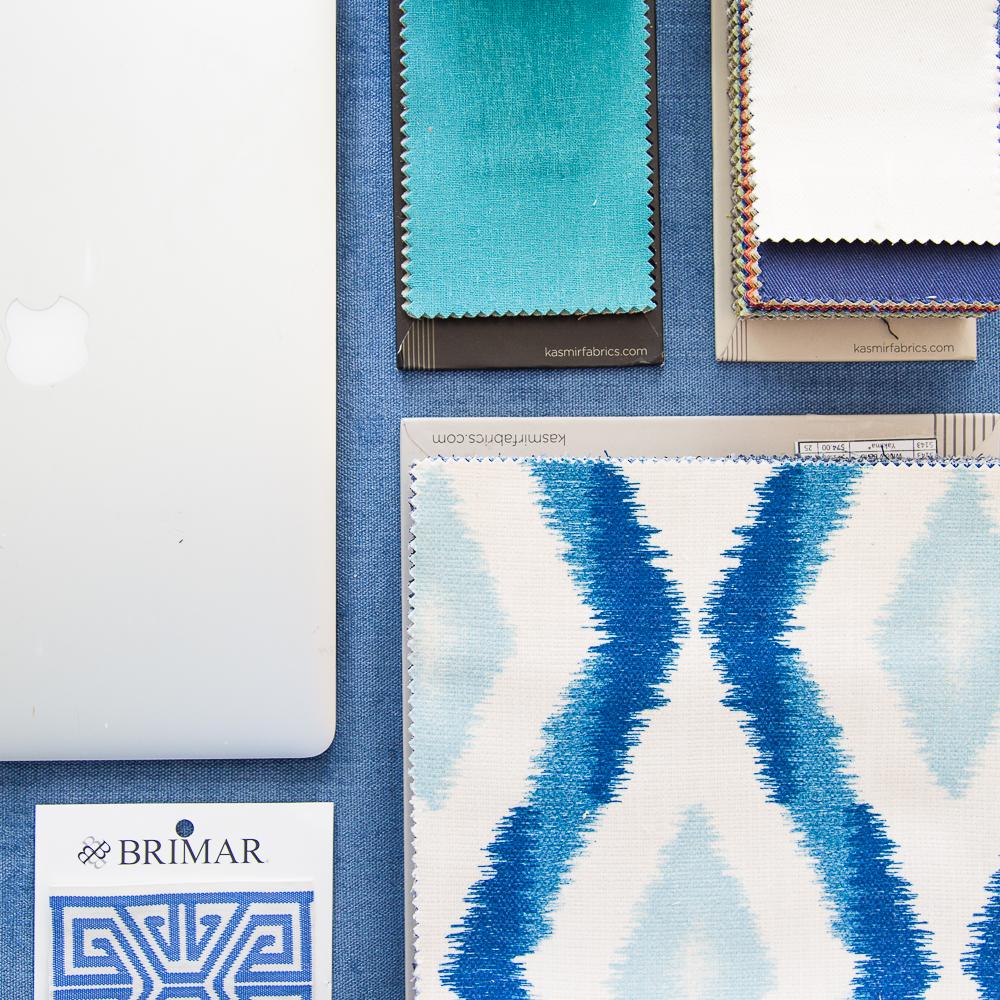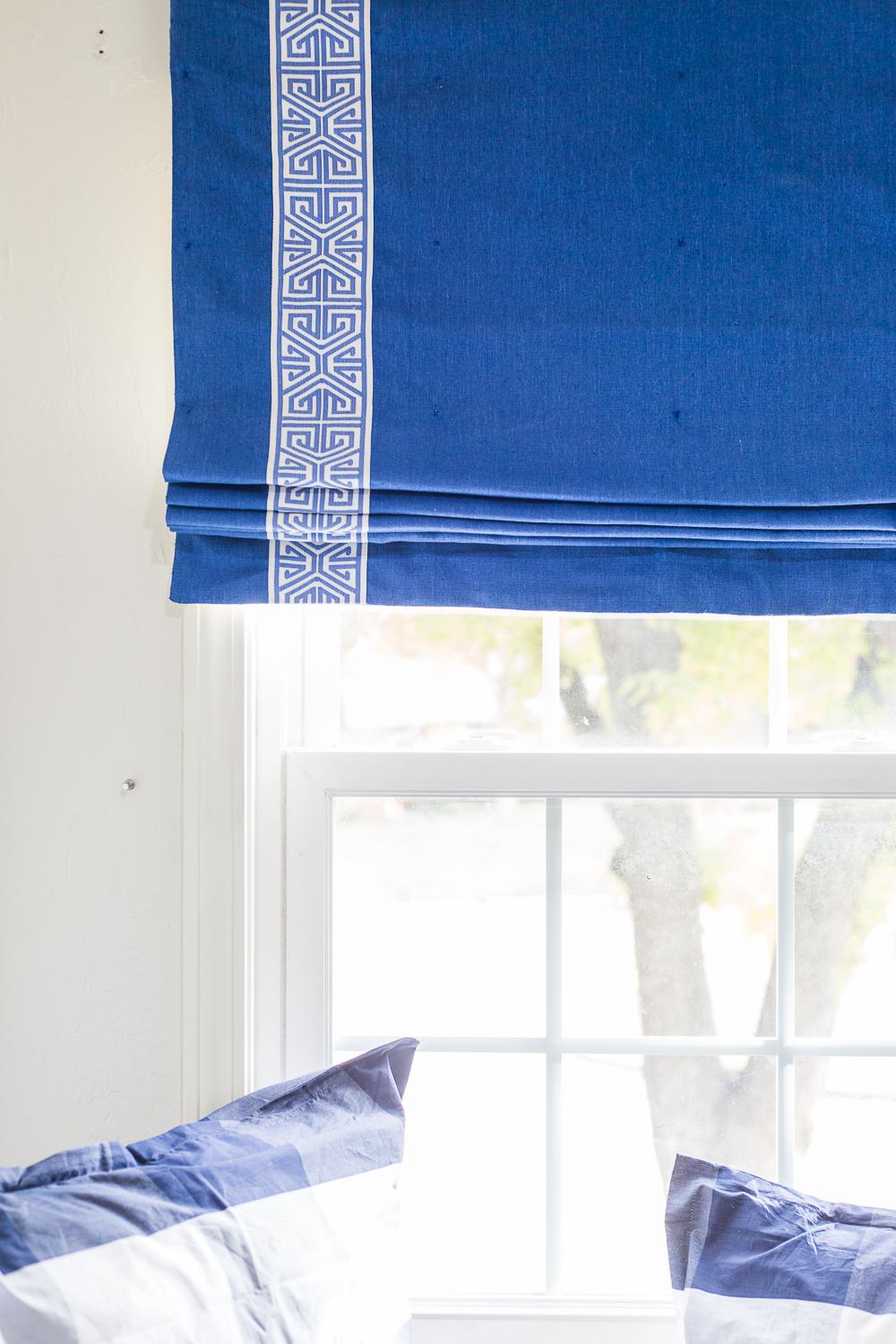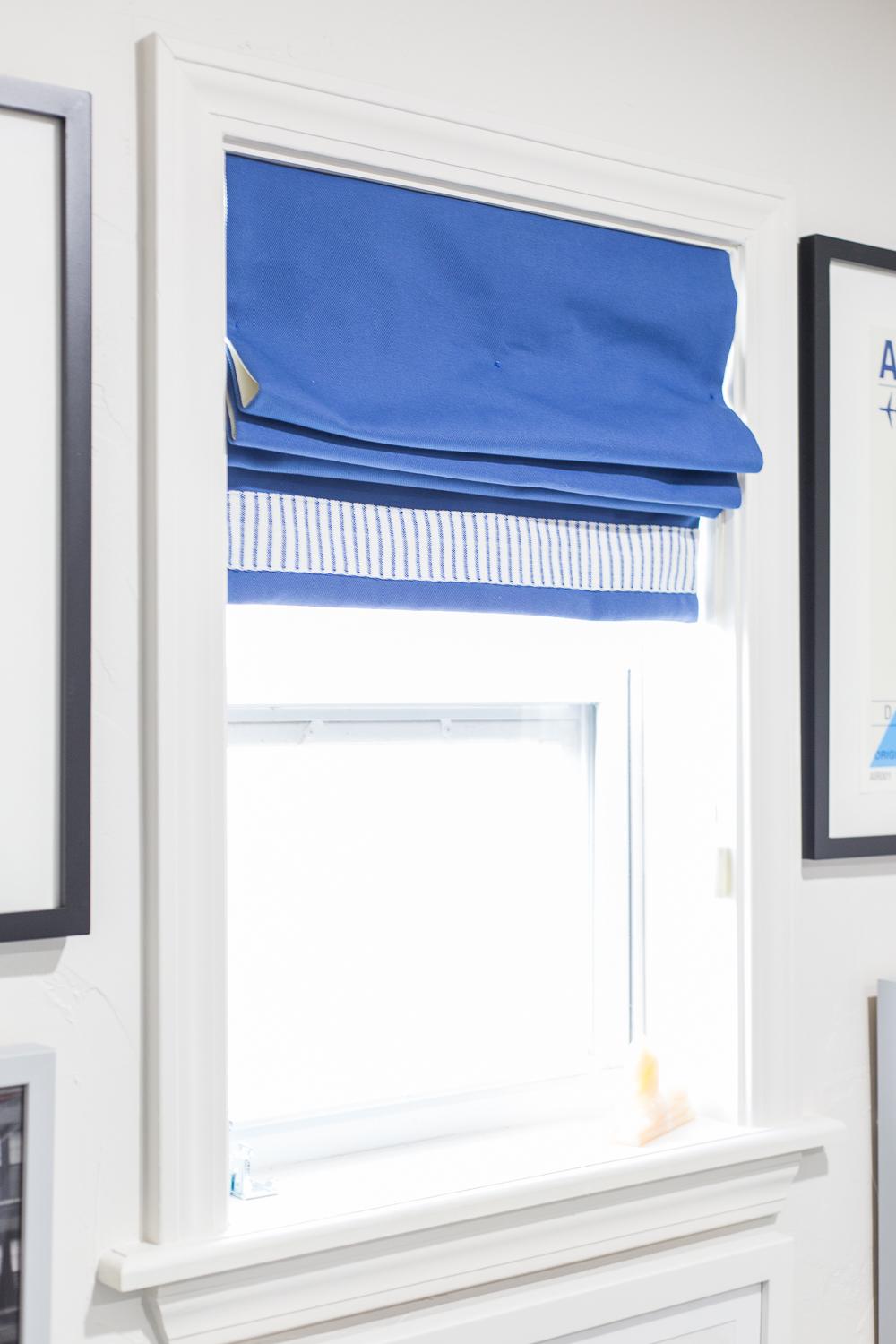Over the next week before the reveal of my fall One Room Challenge project, I wanted to put a spotlight on some of the sponsors who’ve made this whole thing happen. First up is Heather Langhofer who owns Grace Allen Design in Oklahoma City, a company that creates stunning custom window treatments (including the Roman shades for our One Room Challenge). Heather has been in the window treatment industry for her entire career and with her extensive knowledge in all types of items from shutters to motorized shades to drapes and more, she offers tremendous value to her customers in the depth of her experience. When we first met in person, we’d already been discussing the overall look that I was interested in, and she showed up at my door with oodles of fabric samples and trims to choose from. The rest was seamless – she measured, made recommendations, and sent renderings so I could visualize the final look (see here).
You made the most beautiful Roman shades for my One Room Challenge. For someone who’s new to the whole world of window treatments, when is it appropriate to use Roman shades? When do you not recommend someone to use them?
I am a huge fan of Roman shades so therefore I think it’s always appropriate to use them. But seriously I think it comes down to the best way to use them for the function and style of a space. For instance: if you want a really dark bedroom, they they might not be sufficient as you will always have some light leaking on the sides and top or bottom. However take that same shade and layer them with some panels that can be pulled shut and bam! You have a cave fit for the most light-sensitive sleeper. Plus I do love a layered window treatment since it adds so much depth to a room. Also Roman shades are a good fit when someone wants a fabric look but maybe doesn’t have much wall space to stack a drape and they are trying to keep a view out.
What are the biggest mistakes you see people make with their window treatments?
DIY install often results in improperly anchored hardware. Over time the treatment starts to droop because the bracket isn’t secure enough into the wall. Using the correct anchors and fasteners matters! Incorrect bracket spacing also affects the integrity of the install and the overall look. Even if you don’t choose custom products, a professional installation can make all the difference in the finished look.
Talk a little about the different styles of Roman shades and when it’s appropriate to use them.
The overall look of the room + the fabric chosen plays a big part in the style I recommend. A hobbled shade adds lots of dimension to a room, and looks very nice and full even when lowered, but I like them best on solids. It’s not my favorite with a patterned fabric, as the pattern is broken up by the folds of the shade and I find that very visually distracting.
A soft fold shade is gorgeous and so romantic. But the construction method means it pulls in a little on the side so it’s best layered with panels or mounted outside the window. Also, it’s a lot of work to dress this style shade and make those folds look pretty so it’s not a good choice for any area that requires it function regularly.
The most popular style right now is a flat fold. (Editor’s note: this is the style I went with for our One Room Challenge.) They can be made with or without a valance, with added trim, and looks great with both solid fabrics or showing off a great print.
Any big trends or major advancements in Roman shades lately?
There’s always a forward focus on child safety. Clutch lift cords make operation more child safe and so much easier to operate each day. Some suppliers offer cordless mechanisms now as well on roman shades and if your windows allow for it that’s a great option. That’s more from production workrooms — not from your smaller, more specialized suppliers.
Why should someone choose custom over ready-made drapes or shades (i.e., Pottery Barn, etc.)?
1). You have the opportunity to create something special and unique to your space when you choose custom
2). The quality of finish details that come in custom window treatments is to a different level. The interior structure is so well done.
Drapes: double turned headers and hems give the panel structure when it hangs; weighted bottoms also help them hang nicely. Custom drapes are typically pleated, which allows for them to look full, yet structured and neat when open or pulled shut.
And I am amazed what a piece of quality lining can do for even the most mediocre fabric. Lining is the unsung star of custom treatments, in my honest opinion. It gives the face fabric substance, protects it from the sun, and really contributes to the body of the finished drape.
Weighted bars in roman shades help fabric hang nicely. Custom sizes roman shades are sized for your window precisely and look great up Down or anywhere in between.
Where can people cut costs to get maximum bang for their buck when it comes to getting custom window treatments?
So, fabric is going to be pricey (editor’s note: usually due to the overall amount needed). If you are on a budget, be judicious in your use of fabric treatments. For instance I will often do a roller shade for function and privacy and layer some side panels that are meant to be decorative, not functional. If you fall in love with a fabric out of your budget, find a place to use it in small quantities. Any way you construct a fabric flat you get a lot of wow for not a lot of yardage. Think flat Roman shades or cornice boards.
Traditional drapery is usually figured by 2 1/2 times the width of the space you are trying to cover, but I successfully use two times the width just by adjusting my pleat style. The finished look is a little bit more tailored but still has a fully custom feel to it.
Also, custom hardware does not have to break the bank. I use a couple of different metal lines that are very budget friendly and offer current selection of finishes such as oil-rubbed bronze and (my favorite) brushed brass.
Any advice when it comes to child-proofing your window treatments?
Well, I threaten mine within an inch of their life not to touch the drapery. But if that’s not your jam, then I’d go with Crypton, Sunbrella or soil-repellent treatment. Also, if you don’t let your drapes puddle on the floor they won’t tend to collect dirt and grime as badly. Have those drapes just kiss the floor or hang 1/2″ off.
I can’t say enough great things about Heather and her beautiful work. Grace Allen Design services the greater Oklahoma City metro area including Edmond, Arcadia, Norman, and Moore. Want more info? Check out Heather’s website and her Instagram, and contact her here to schedule a consultation. Thanks for supporting the businesses that keep Pencil Shavings going.
You might also enjoy:
with love,
Rachel









